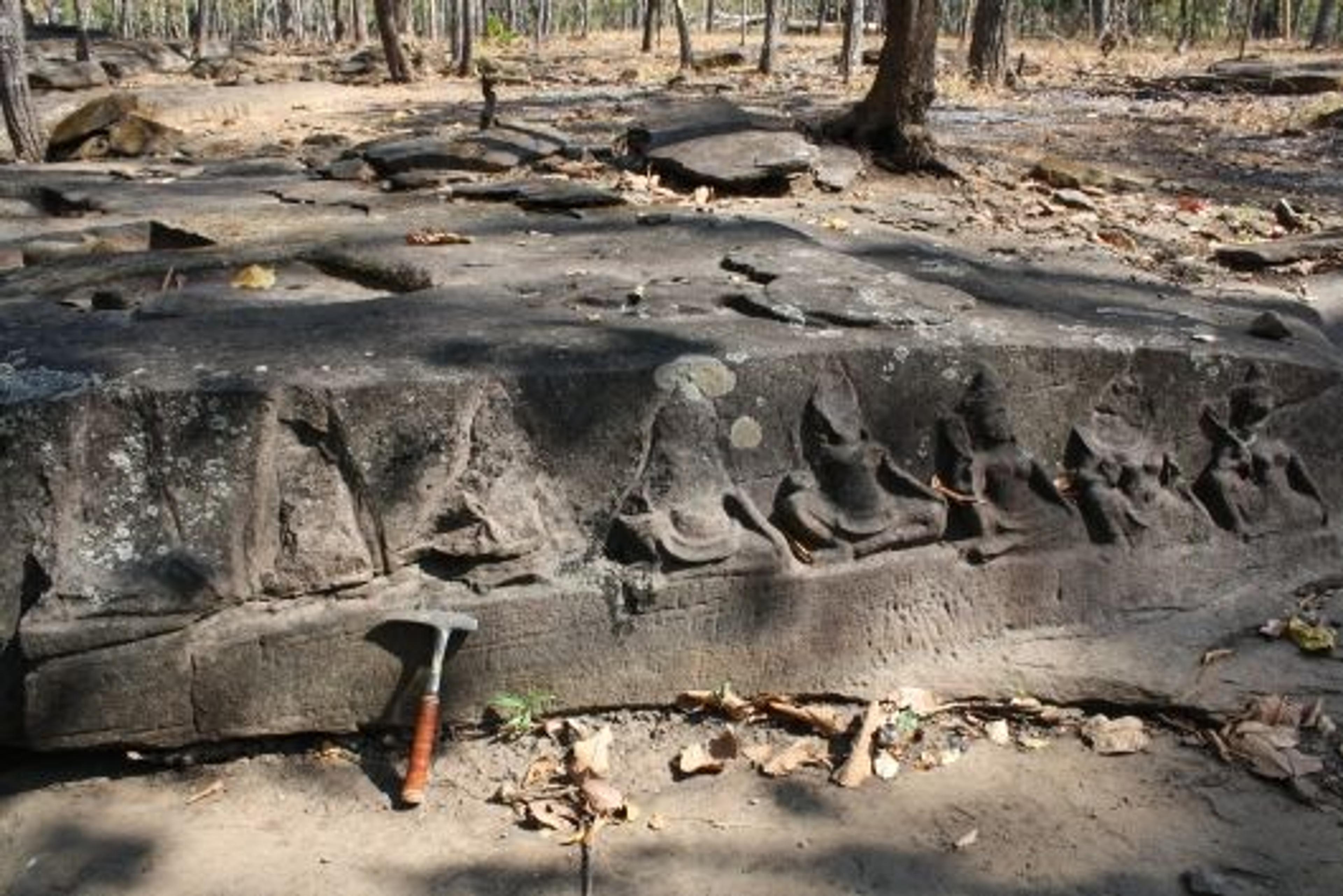From Quarry to Sculpture: Understanding Provenance, Typologies, and Uses of Khmer Stones

«The substantial collection of Khmer art at the Met comprises pre-Angkor and Angkor freestanding sculptures and architectural elements from Cambodia, Thailand, and Vietnam. Like the works gathered in Phnom Penh at the National Museum of Cambodia and in Paris at the Musée Guimet, these works illustrate the birth and evolution of the different Khmer styles and record changes in the sculptural artistic medium through time and across geographical areas (see map and timeline).»
As a scientist in the Department of Scientific Research, I've been studying these sculptures from a material point of view, focusing on the classification of the stone used by the Khmers for their artistic production. Well-established analytical techniques in the field of Earth Sciences, such as petrographic and geochemical analyses, have helped me investigate the intimate nature of the stones and, ultimately, their possible location in the geological framework of Southeast Asia.
Characterization of the stone materials sheds new light on Khmer works in the Met's collection. It reveals possible groupings of sculptures according to material, and—once these results are integrated with stylistic considerations and compared with other published data about stone usage in Cambodia—may lead to a better understanding of the relationship between iconographic and material traditions. The project also has great significance for a broad range of scholars involved in historical and archaeological research in Southeast Asia, setting the basis for a quantitative database of Khmer materials. By providing useful insights into the nature and techniques of Khmer stone quarrying, redistribution, and usage, it has the potential to unveil specific production workshops, to illuminate networks of trade and interdependency between centers of power during pre-Angkor and Angkor periods, and to help explain the locations of ancient roads and settlements belonging to a complex social system strongly influenced by the available natural resources.
Originally limited to study of the Museum's collection, the project has been extended to include sculptures from the National Museum of Cambodia and samples from ancient quarries that provided stone material as early as the seventh century. During a first expedition organized in 2009, in co-operation with APSARA (Authority for the Protection and Management of Angkor and the Region of Siem Reap), I surveyed and sampled two important quarry sites in northern Cambodia (see photo above) dating to the tenth century. The first results are encouraging, as our team found specific petrographic and geochemical fingerprints that will help identify the stones' provenance and distinguish between different quarries.
Next week, I'll be leaving for a month-long expedition to survey additional quarries of the Angkor period, as well as undated sites that could reveal sources of pre-Angkor stone material dating to the seventh century. Stay tuned for the next update…
Federico Carò is an Andrew W. Mellon Fellow in the Department of Scientific Research.
Related Links
Visit the Cambodia Stone Project blog to read updates from Federico.
Read the scientific paper abstract published in Archaeometry: www3.interscience.wiley.com/journal/122536076/abstract
Federico Carò
Federico Carò is a research scientist in the Department of Scientific Research. He was formerly the Andrew W. Mellon Fellow in the Museum's Department of Scientific Research.